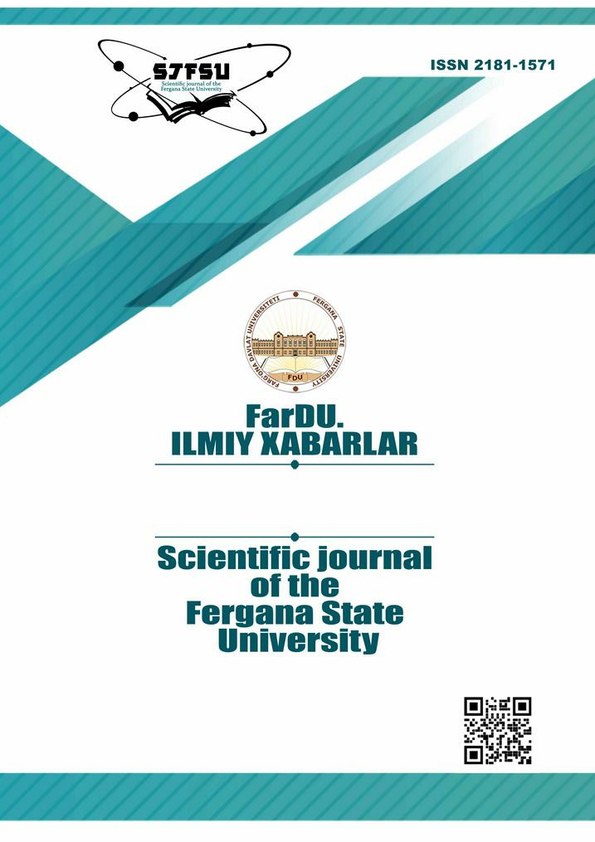UTILIZATION OF MICROALGAE AS FEED SOURCES IN FISHERIES
Keywords:
fisheries, zooplankton, microalgae, macrophytes, biomass, feed, protein, matter, strain.Abstract
It has been noted that the use of strains of the genus Botryococcus and Chlorococcum is appropriate for obtaining live feed with a complete nutritional content for the aquaculture industry, including a lower amount of protein (46.2-46.8%) and fat (26.2-26.4%). representatives of the genus Botryococcus were recorded as the genera of microalgae (Chlorococcum and Chlorella genera have high protein content (46.4-48.8%), but fat content (15.6-18.4%) is very low compared to all studied microalgae genera According to the results, representatives of the Botryococcus genus were recorded as microalgae genera that stored a relatively small amount of protein (46.2-46.8%) and fat (26.2-26.4%). Among them, representatives of the Chlorococcum and Chlorella genera stored protein. high (46.4-48.8%), however, oil storage (15.6-18.4%) was determined that it is very low compared to all studied microalgae genera.
References
Хайдаров С.М. Сув ҳавзаларида балиқ маҳсулдорлигини оширишда табиий озуқа базасининг аҳамияти: Автореф дисс.... биол фан фалс докт (PhD). –Тошкент, 2022. –Б.18.
Абдиназаров Х., Урманов Х., Кимёназаров С., Мирзаев Х. Балиқчилик тармоғини тўлақонли озуқа еми базасини шакллантиришда микросувўтларининг аҳамияти / O‘zbekiston Milliy universiteti xabarlari, 2021, [3/2] ISSN 2181-7324. Б. 4-8.
Мадумаров М.Ж. Ўзбекистон фаунасида Daphnia (Cladocera: Daphniidae) авлодининг морфо-биологик хусусиятлари ва амалий аҳамияти: Автореф дисс.... биол фан фалс докт (PhD)– Фарғона, 2022. –Б.18.
Абдиназаров Х.Х. Фарғона водийси сув ҳавзалари зоопланктони: Автореф дисс.... биол фан фалс докт (PhD). –Тошкент, 2019. –Б.18.
Waterhouse J.M. 1993. Book Reviews. Time & Society, 2(1), 129-130.
Shakirov ZS., Safarov IV., Kadirova GKh., Khujamshukurov NA. 2014. Isolation and identification of lipid-producing microalgae of Uzbekistan. Environmental Science. Vol.9:405-409.
Safarov I.V. 2020. Biodizel olish uchun O‘zbekistonning yuqori mahsuldor lipid hosil qiluvchi mikrosuvo‘tlari va ularda yog‘ biosintezi regulyatsiyasi. PhD thesis in microbiology. Uzbekistan. P.136.
Кузметов А.Р. Зоопланктон рыбоводных прудов Узбекистана: Автореф дисс. … канд. биол. наук. – Ташкент: ИЗ АН РУз., 1999. 16 с
Aqua Feed Market: Global Industry Analysis, Size, Share, Growth, Trends and Forecast, 2013–2019: Transparency Market Research. URL: http://www.transparencymarketresearch.com/aqua-feed-market.html.
Khujamshukurov N.A., Nurmuxamedova V.Z. 2016. Production feed: modern trend and development aspect. Scientific overview. J.Zooveterinary. №8 (105):34-37.
Downloads
Published
Issue
Section
License
Copyright (c) 2023 Scientific journal of the Fergana State University

This work is licensed under a Creative Commons Attribution-NonCommercial-NoDerivatives 4.0 International License.
How to Cite
Most read articles by the same author(s)
- , ETHNIC PROCESSES IN TURKESTAN IN THE SECOND HALF OF THE XIX CENTURY , Scientific journal of the Fergana State University: No. 6 (2023): FarDU ilmiy xabarlari jurnali (Ijtimoy gumanitar fanlar)
- Xasanboy Qodirov, THE CLASSIFICATION OF INNOVATIVENESS ON THE LEVEL OF AN INDIVIDUAL AS PROPERTY OF THE PROFESSIONAL PEDAGOGICAL CULTURE , Scientific journal of the Fergana State University: No. 1 (2023): Scientific journal of the Fergana State University (Social humanities sciences)
- Xasanboy Qodirov, Nurzoda Abdullajonova, THE SIGNIFICANCE OF COOPERATIVE PEDAGOGY IN FORMING CHARACTERISTICS OF HUMANITY , Scientific journal of the Fergana State University: No. 1 (2023): Scientific journal of the Fergana State University (Exact and natural sciences)
- , EFFECTIVE FORMS OF PHYSICAL EDUCATION AND SPORTS EVENTS IN EDUCATIONAL INSTITUTIONS , Scientific journal of the Fergana State University: No. 4 (2024): Scientific journal of the Fergana State University (Social humanities sciences)
- , , EVALUATION OF MICROALGAE AS A NATURAL FOOD SOURCE , Scientific journal of the Fergana State University: No. 3 (2024): FarDU.Ilmiy xabarlar jurnali (Aniq va tabiiy fanlar)
- , , , USE OF MICROPHYTES TO INCREASE THE BIOMASS OF DAPHNIA MAGNA, WHICH IS IMPORTANT IN FISHERIES , Scientific journal of the Fergana State University: No. 3 (2024): FarDU.Ilmiy xabarlar jurnali. Ilova to'plam (Aniq va tabiiy fanlar)
- , , , TECHNOLOGY FOR PREPARING A NUTRIENT MEDIUM FOR MICROALGAE (EXAMPLE OF ANKISTRODESMUS) , Scientific journal of the Fergana State University: No. 2 (2025): FarDU ilmiy xabarlari jurnali (Tabiiy fanlar)
- , , INCREASING THE BIOMASS OF ANKISTRODESMUS MICROALGAE IN CHU-13 FOOD ENVIRONMENT FOR AQUACULTURE , Scientific journal of the Fergana State University: No. 3 (2024): FarDU.Ilmiy xabarlar jurnali. Ilova to'plam (Aniq va tabiiy fanlar)
- , , DETERMINATION OF BIOLOGICAL, MORPHOLOGICAL CHARACTERISTICS AND SPECIES COMPOSITION, DISSOLVED OXYGEN LEVEL OF (L.MINOR) , Scientific journal of the Fergana State University: No. 6 (2023): FarDU.Ilmiy xabarlar jurnali (Aniq va tabiiy fanlar)

